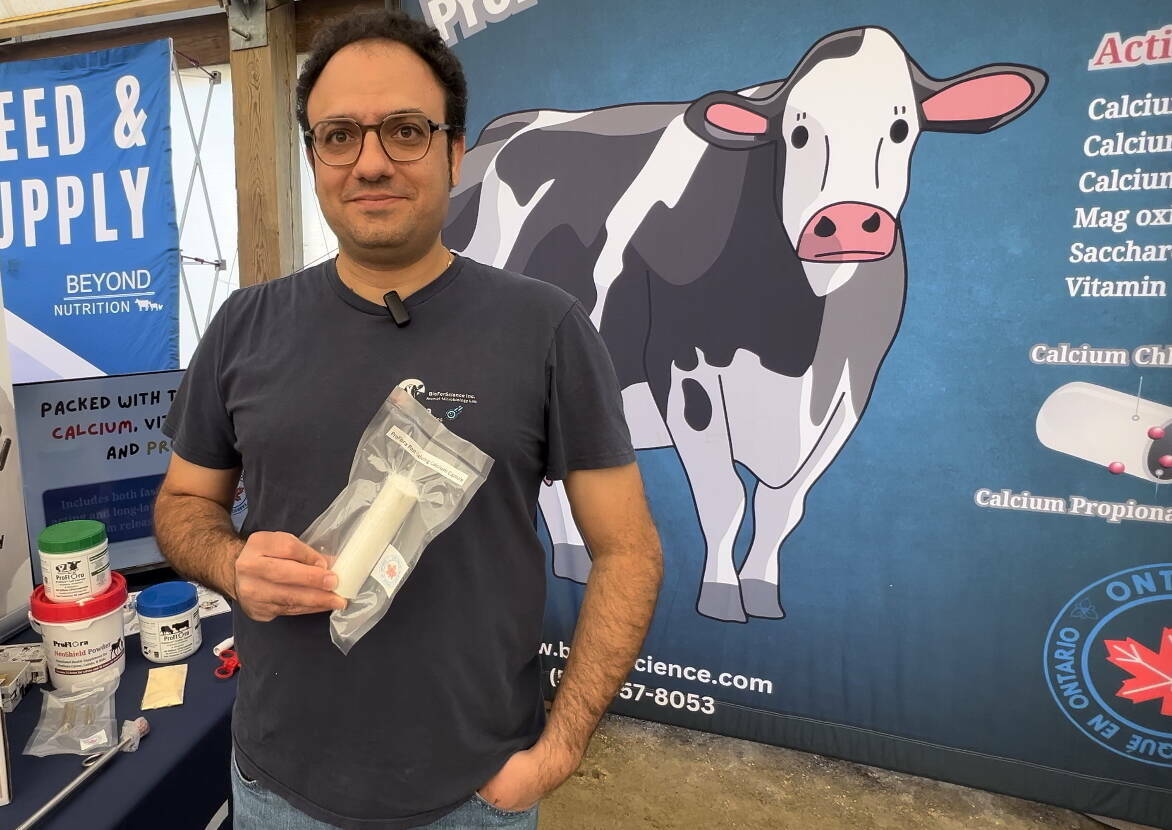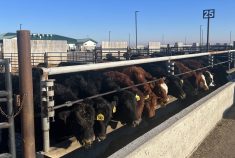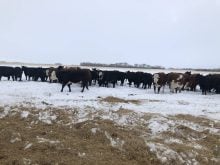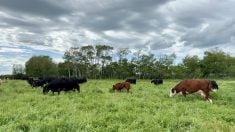In the May and June issues of this column, we examined how stage of maturity influences the nutritive value of forages for grazing cattle. The focus was on factors influencing the availability of energy and crude protein (CP) in forages and on the ability of rumen bacteria to utilize these nutrients to support their own growth (i.e. synthesize protein) and to allow the grazing animal to utilize the energy stored in the leaves and stems of the plant. The subsequent flow of microbial protein from the rumen to the small intestine is a critical step in meeting the protein and amino acid requirements of all classes of cattle. We also discussed the differences between rumen degradable (RDP) and undegradable (RUP) protein and the importance of RDP to driving fermentation activity by the rumen bacteria. In this column I would like to discuss how strategic protein supplementation can make a difference in your bottom line.
Read Also

Canadian Cattle Young Leaders, national Environmental Stewardship Award winner and more
Canadian beef industry news, including award winners and job changes.
There are several examples one can give where mismatches in dietary energy and protein availability in the rumen can result in poor performance. In the feedlot, a good example is the feeding of corn-based diets, a practice common to the U.S. and Eastern Canada. Corn grain is low in CP (eight to 10 per cent) and RDP (approximately 45 per cent) compared to barley (11 to 13 per cent CP of which approximately 70 per cent is RDP). Corn-based growing and finishing rations typically require protein supplementation, particularly when corn silage is used as the forage source. In such situations, a urea-based supplement is a wise choice. As discussed in the June issue, urea provides a source of readily available nitrogen to the rumen bacteria which can be used to support microbial protein synthesis which in turn is used to meet the protein/amino acid requirements of the animal. In this case, strategic supplementation of a rumen degradable nitrogen source will enhance rumen fermentation, improve feed efficiency and help lower protein supplementation cost as urea-based supplements are generally cheaper than all natural protein supplements.
- More cattle nutrition with John McKinnon: Choosing the right mineral more than about price
A second area where we get concerned with matching rumen energy and protein availability is with advancing maturity of many of our cool-season forages. A classic example is the change in nutrient value of crested wheat grass (CWG) as it matures over the summer. At the Western Beef Development Centre in Lanigan, Sask. we have shown that the CP content of CWG pasture can drop from 15 per cent or more in the spring to less than seven per cent in the late fall. In contrast, acid detergent fibre (ADF) levels increase almost linearly from initial values of 32 per cent in the spring to 46 per cent in late fall.
Remember from earlier discussions that as ADF levels in forages increase, available energy content decreases. In effect, we are dealing with a situation that as CWG pasture matures both energy and protein content of the pasture decline. Similar patterns are seen with other cool-season forages with advancing plant maturity. There are several issues that occur as a result. The first is that the energy and protein content of the pasture falls to levels that will not support desirable gains in growing cattle and may only meet maintenance needs in non-lactating cows.
Compounding this issue, is the fact that dry matter intake of cattle grazing mature forages with less than seven to eight per cent CP (DM basis) often declines due to reduced digestibility of the forage. This is a result of insufficient rumen degradable protein to support microbial protein synthesis. As a result, rumen bacteria fermentation activity declines and forage dry matter digestibility drops. This lost productivity can be a serious issue for beef producers who rely on late-season grazing for both yearlings and lactating cows. One solution is to supplement protein, particularly RDP. This will allow the rumen bacteria to increase their fermentation activity which in turn will increase forage dry matter digestibility and thus increase dry matter intake. The increase in microbial protein synthesis also helps to meet the animal’s protein requirements.
- More from the Canadian Cattlemen: A new look at acidosis
There are numerous means of providing protein supplements to cattle grazing mature forages. These include providing a predetermined amount of a natural RDP supplement such as canola or soybean meal or a supplement high in RUD such as dried distillers grains with solubles. These supplements can be fed daily or less frequently (i.e. every second or third day) in an effort to reduce supplementation costs.
Other methods include the strategic supplementation of protein blocks and tubs. From a convenience perspective, the latter is preferred by many producers. Cattle blocks/tubs range from 15 to 40 per cent crude protein and include a variety of natural and non-protein nitrogen (i.e. urea) sources of protein. The nature (i.e. RDP versus RUP) and concentration of protein in each product is typically designed to meet the specific pasture conditions where supplementation is required. As well, most block/tub formulations include a range of macro and trace minerals as well as vitamin A, D and E. Choice of supplement should depend on need for supplemental protein, product nutrient concentration, method and ease of delivery and daily cost per head supplemented.
John McKinnon is a beef cattle nutritionist at the University of Saskatchewan

















